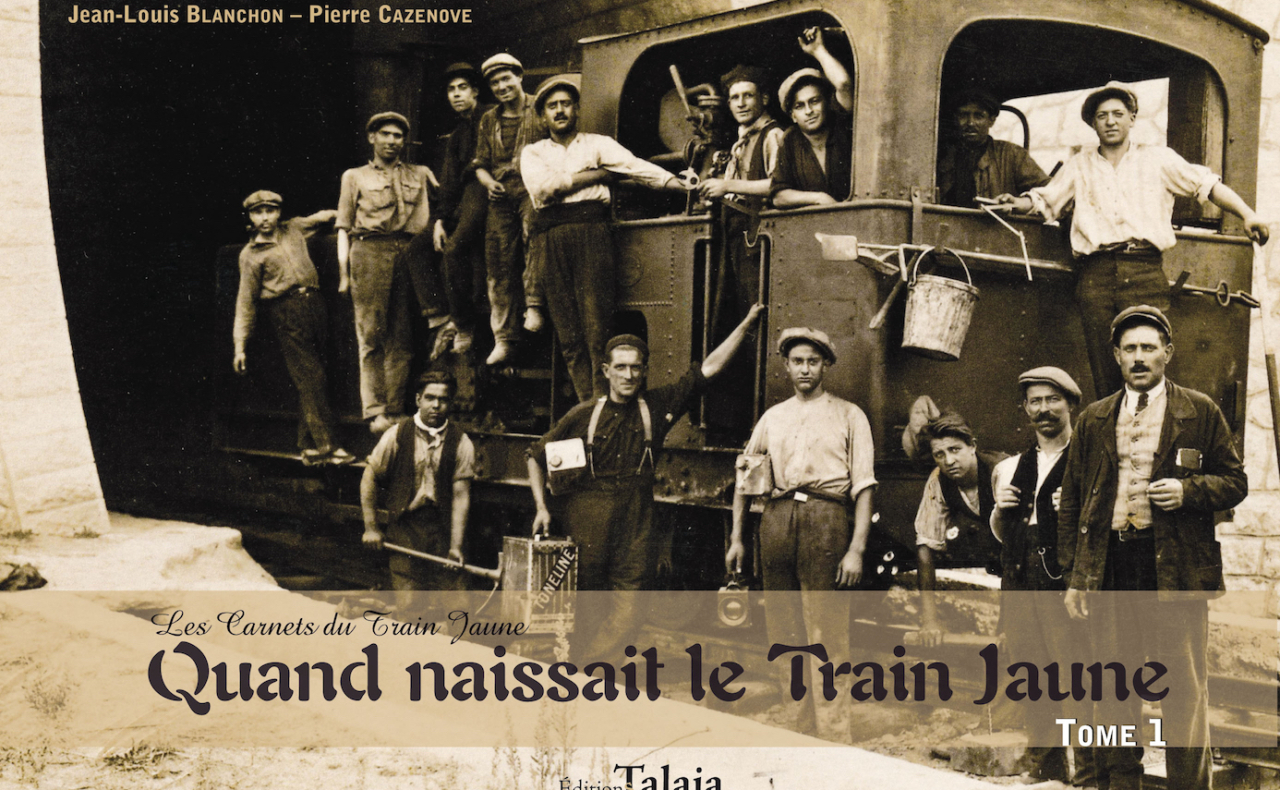With this new event highlighting the” Les carnets du Train Jaune ” collection, the Parc Naturel Régional des Pyrénées Catalanes offers a retrospective, a journey back in time through the construction of the Yellow Train line and its history. This collection is the result of a collaboration between the Parc Naturel Régional des Pyrénées Catalanes and historians Pierre Cazenove and Jean-Louis Blanchon, co-published with Editions Talaïa.
In this third part, after the first section (Villefranche-de-Conflent – Mont-Louis), the opening of the second section of the Yellow Train line.
The opening of the line Part 2 – Mont-Louis / Bourg-Madame
While some people were beginning to discover the joys of rail travel, others were watching with interest the work being carried out between Mont-Louis and Bourg-Madame. In August 1910, ballasting was completed between Mont-Louis and Err, and between Bourg-Madame and Osséja. The line was completed in March 1911, and in May supported regular test trains with two self-propelled units.
On 20 May 1911, Jules Lax and senior officials from Public Works and the Compagnie du Midi officially recognised the line from Mont-Louis to Bourg-Madame.
Leaving Perpignan at 5.16am, the train, driven by Lhériaud, arrived in Mont-Louis at 9.00am after stopping for a few moments on the Gisclard bridge.

In Bourg-Madame, at 11.30am, just as the train had stopped at each station, to the acclaim of the crowds, Emmanuel Brousse introduced the mayor of Bourg-Madame, Bonaventure Cot, and his municipal council to the crowds : “(…) When I think back 50 years, said the mayor, I’m amazed by the transformations my little homeland has undergone. The impassable rocky paths have given way to beautiful roads serving the smaller towns. And the crowning glory of this work is the admirable and marvellous railway line you have laid across our mountains, which we applaud with all our heartfelt gratitude » He then wished Bourg-Madame to become the international station under the Transpyrénéen line concession decree : « And then my town would no longer be Bourg-Madame ; it would become Ville-Madame-Lax or Ville-Lax-Madame. Long live Mr Lax ! Long live the Republic !
After a banquet in the station concourse, the group headed for Spain. On the bridge, a cobla, hired by Puigcerdà pharmacist Marty, played La Marseillaise. Emmanuel Brousse gave a speech in Catalan, Marty in Castilian ; Baillet, secretary of the Comédie Française, recited poetry at Casino ceretano.

It was becoming a habit ; landslides at Fontpédrouse delayed the inauguration of the Mont-Louis / Bourg-Madame line. On 16 June, extra trains cleared the stations of the parcels that had been piling up for a fortnight.
Finally, on 18 June 1911, passengers could travel from Perpignan to Bourg-Madame : « Here’s Bolquère, here’s Saillagouse, Err, Sainte-Léocadie, Osséja. On the station platforms, people massed, attentive and curious, as if brought together, while in the fields, as the little train slipped past, meandered on its way, yellow against the green carpet of the meadows, the peasants stood with their spades in the air, surprised by the novelty of this thing they’ve heard so much about and which, thanks to Emmanuel Brousse, they now have : the railway. There’s one who, with a solemn look, greets us with his large scythe in his arms ; and further on, two women, bent over among whatever they are, potatoes or beet, straighten up at the sound of the whistle and start to clap enthusiastically. The travellers acknowledge them by waving their hats.
To ensure that everything ran smoothly, Mr Moffre, director of the Compagnie du Midi, insisted on attending the inauguration day himself, as the official inauguration wouldn’t take place until a later date. » (L’Indépendant)
Emmanuel Brousse wasn’t there.
Book extract
Les Carnets du Train Jaune
Volume 1 – When the Yellow Train was born
authors: Jean-Louis Blanchon / Pierre Cazenove
Parc Naturel Régional des Pyrénées-Catalanes / Editions Talaia
June 2012
Complete collection available for consultation and/or sale at Maison du Parc Naturel Régional des Pyrénées-Catalanes, in Olette (66360, La Bastide).
